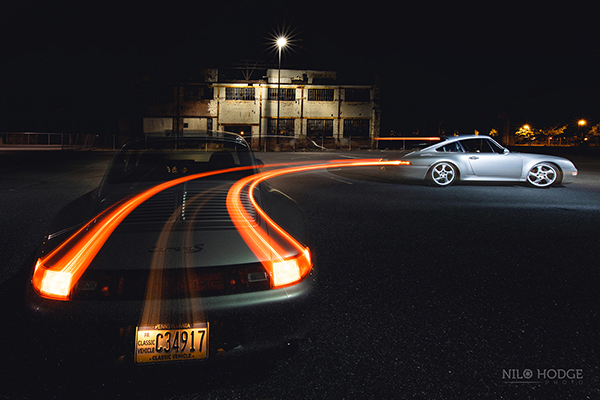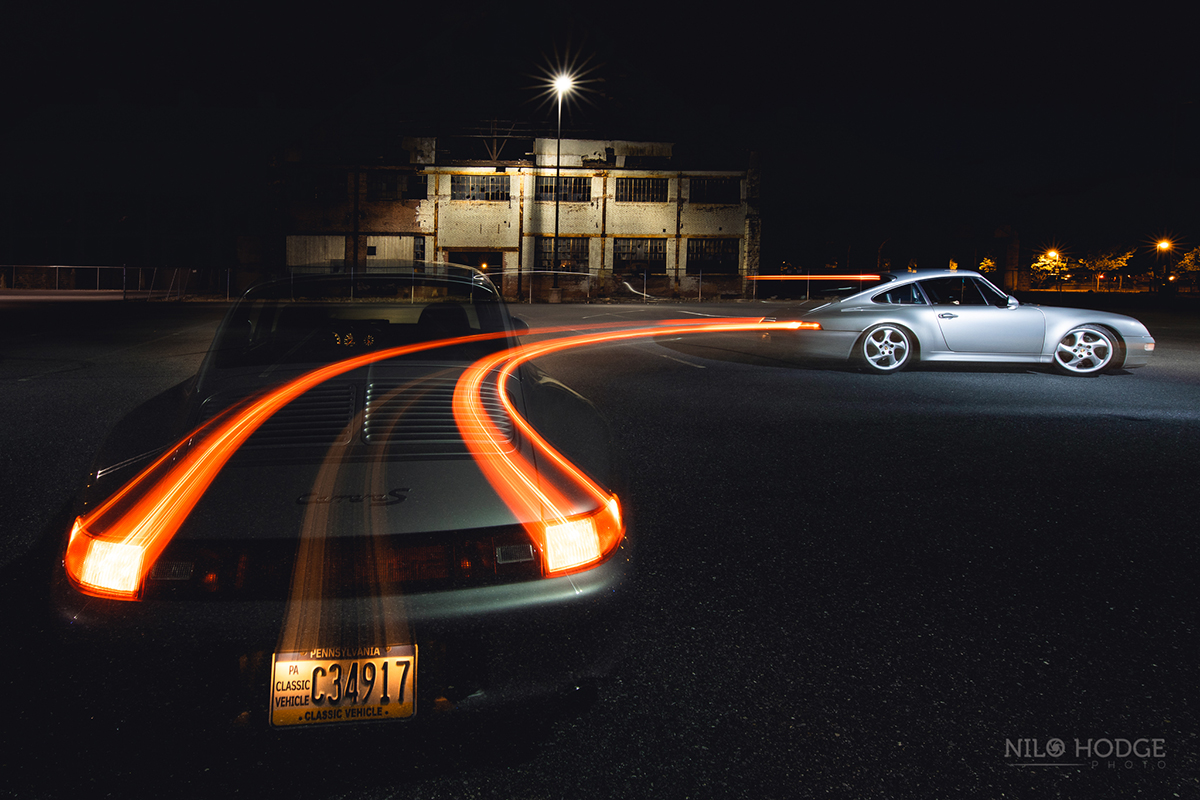How'd You Get That Shot?
Former Bethlehem Steel mill, Bethlehem, Pennsylvania
More Photo Tips | Video Gallery | Photo Gallery | Enewsletter sign-up
Image by Nilo Hodge

Tamron SP 15-30 F/2.8 VC G2 (17mm, F/13, 10 sec., ISO 200)
Click image to view larger
We have an old steel mill here: the Bethlehem Steel Mill. It was shut down a long time ago, but they've repurposed it since into an event space. This image was taken in one of the venue's parking lots using a Porsche 911 Carrera S (993).
I do a lot of long exposures and light painting, and the owner of that car is a good friend of mine who's been wanting me to come up with an idea to shoot this car, so he could have some photos of it. I'd also learned about second curtain sync for flash awhile back, but I'd never really played around with it. I thought it'd be a cool idea to try out that technique on top of the light painting with the car's taillights.
Flashes normally start with first curtain sync: When you hit the shutter button, the flash fires. With second curtain sync, when the second curtain—the second part of the shutter—closes, that's when the flash fires and you get your exposure.
I had the driver begin in his starting position, with the light from a nearby streetlamp illuminating the rear of the car a bit. I told him to take his foot off the brake so the top brake light wouldn’t trail in the beginning of the exposure; it was pretty flat terrain there, so the car didn't roll backward or forward. When I started the exposure, I told him to wait one second, then to drive off. So the only time you can see the actual brake taillight is a couple of inches of it toward the end of the exposure.
In terms of timing, for the driver to get the car to the predetermined ending spot, there was a lot of trial and error. We had to reposition the car a few times to make the composition work. The 15-30 lens I chose to take this photo was wide enough to give me the room to play with the timing, in terms of how far he needed to travel. I started playing with the shutter speed until the driver got to a point where he knew where to stop (I had a marker using one of my flash stands). It took between 10 and 15 tries before we got it exactly right and the two off-camera flashes fired at just the right moment, when he was in the correct spot.
I had to increase the exposure, which is why the f-stop is so high—I had to up the shutter speed so he could get to his spot without having to rush. I wanted him coming in slow because I didn't want a lot of that brake light happening toward the end.
More Photo Tips | Watch Videos | Learn More About Tamron Lenses | Photo Gallery
